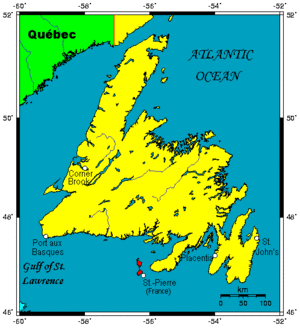Mistaken Point Ecological Reserve facts for kids
The Mistaken Point Ecological Reserve is an amazing place in Newfoundland and Labrador, Canada. It's famous for having some of the oldest and most important fossils in the world!
Sailors named it 'Mistaken Point' because it was often foggy and tricky to navigate around this part of Newfoundland's Avalon Peninsula. This special place might even become a UNESCO World Heritage Site, which means it's super important globally! You can only visit the fossil areas with an official guide, and you're not allowed to collect any fossils yourself. This helps protect them for everyone.
Discovering Ancient Life: The Fossils
The fossils at Mistaken Point are found in layers of rock like mudstone and sandstone. These rocks are tilted and show cracks from Earth's movements. The fossils are right there on the surface, easy to see!
They are part of the Ediacaran biota, which are the oldest known complex life forms. These creatures were multicellular, meaning they were made of many cells, just like us! The Ediacaran period was the very last part of the Proterozoic eon.
These fossils are incredibly old, dating back between 579 and 542 million years ago. Back then, all life lived in the sea.
Mistaken Point is the only place in the world where you can see a 565-million-year-old sea floor. It shows us exactly how these ancient deep-sea communities lived together.
This special fossil site, called a lagerstätte, contains over 30 different types of ancient creatures. Most of these groups are now extinct and are completely different from anything alive today.
How These Ancient Creatures Lived
These amazing creatures lived on the bottom of a very deep ocean, where no sunlight could reach. What is now Newfoundland was much further south back then, between latitudes 40° and 65° South.
The soft bodies of these animals were preserved right where they lived on the muddy sea floor. This happened because they were suddenly buried by repeated falls of volcanic ash. The ash layers, called tuff, contain tiny crystals called zircon. Scientists can use these crystals to accurately figure out the age of the fossil layers using a method called radiometric dating.
Fossils of a similar age have been found in places like Russia and Australia. However, the huge variety of fossils found at Mistaken Point makes this site truly unique and special.
Related pages



